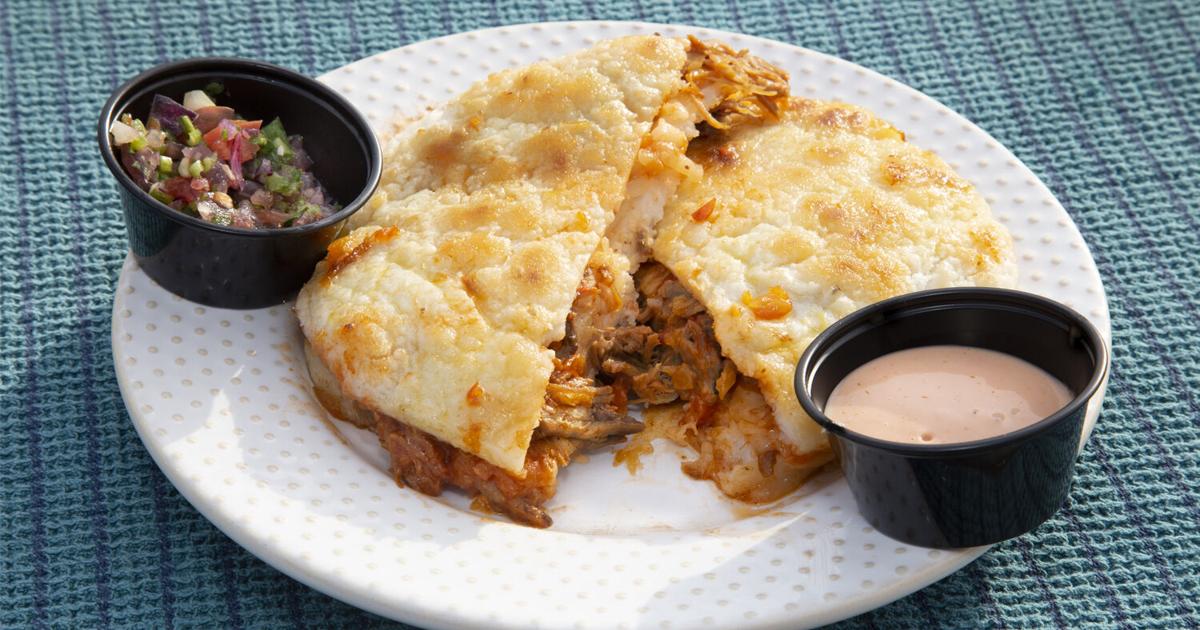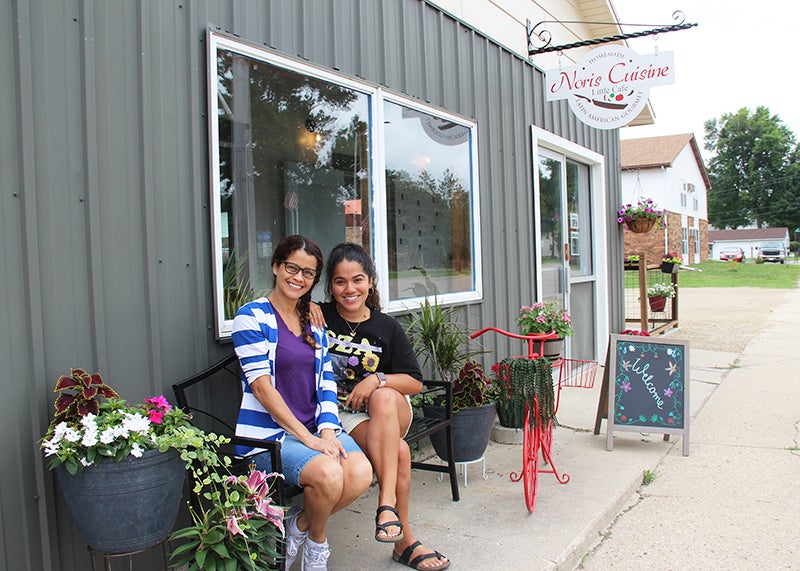Yangban Society, the deli and Los Angeles market that couple chefs Katianna and John Hong opened on Monday, is all about mixing cultures while creating their own culinary language.
“We are not in any way trying to elevate Korean cuisine or modernize Korean cuisine,” Katianna says. “We’re just trying to find food that is authentic to us and our experiences as Korean-Americans.”
The Yangban Society’s dishes in Los Angeles’ Arts District include a pea and chive shoot salad which is a riff on the banchan of raw shallots at Korean barbecue restaurants. There’s a bowl of rice with black bean sauce that’s a nod to both the Korean jajangmyeon and the bolognese that Katianna learned to cook early in her career, at an Italian restaurant in Las Vegas. The Hongs work on fuyu persimmon kimchi, which was born after their daughter’s daycare teacher gave them kimmons, but which is inspired by John’s mom’s fresh, garlic, spicy and crunchy kimchi. .
Katianna and John Hong previously worked in Michelin-starred kitchens.
Photo: Courtesy of Stan Lee
The Hongs have fine chops to spare. They met while working at LA tasting menu destination Melissa and both later became chef at Napa Valley’s three Michelin star restaurant in Meadowood (a role John took over after Katianna left Meadowood. to open The Charter Oak). But they’ve long thought about doing something more personal, and they’re happy to do so at a time when other Korean-American chefs are also turning the story around.
“The second generation of Korean-Americans is coming of age,” says John. “They explore fun ideas and thoughts. I think my parents’ generation was very focused on immigration, looking for jobs, looking for stability, looking for opportunities for their children. What you are seeing now are these children who are leaving and who are more creative, who have the luxury of being a little more free to think and take risks.
The Yangban Company celebrates Katianna and John’s love for delicatessen (especially the Jewish and European delicatessens she frequented in New York City and visited in suburban Chicago), but she was also born in ‘a trip the Hongs made to Korea in 2012. Galvanized by what they ate and experienced, they decided to learn more about Korean regional cuisine.
“Our goal was to study Korean cuisine,” Katianna explains. “And although we are still learning and continuing our education, we started to realize that it felt a bit forced on us and it wasn’t really us. Then it started to sort of transform, well, we can still cook with Korean ingredients and respect the history of the kitchen, but cook in a way that makes sense to us and is more relevant.

Where to eat and listen to early hip-hop.
Photo: Courtesy of Wonho Frank Lee
“For me in particular, the inspiration was to explore the kind of new Korean-American style of cooking and really see how our immigrant counterparts from Eastern Europe took the idea of delicatessen as a backdrop. so that they can share their food, their stories and their stories, “says John.” What if an American of Korean descent used that same past and put in his stories, his story and his idea of what it is? Korean-American food? ”
So the Hongs, for example, serve Korean dumpling soup based on a matzo ball recipe from Katianna’s Jewish grandmother.
Sometimes, of course, chefs follow a playbook and then realize they should make a new playbook. These former tweezer superstars are happy to have an over-the-counter restaurant with a posole of kimchi and pork belly on the menu and milk crate seats in the alleyway. They are happy to let guests sit in the two-story space that previously housed Lincoln Carson’s Bon Temps. They’re happy to feature a vintage cash dispenser from an old delicatessen and some early ’90s and early hip-hop playlists. They plan to serve roast chicken “in very aggressive brine”, which guests can accompany with canned cocktails, wine, Hite beer, or the Yangban Society’s custom makgeolli collaboration with local brewer Sawtelle Sake before savoring. Double 8 Dairy soft drink with buffalo milk. The Yangban Company space also includes a ‘super’, a small market with four refrigerators stocked with drinks as well as wares from local artisans.

Posole of kimchi and pork belly.
Photo: Courtesy of Dylan + Jeni
“We really wanted this to be the place where you have your own experience,” Katianna says. “If you want to come in and spend $ 25 and have a quick lunch and sit at the counter, you can do that.” But if you’re partying and want to sit at a booth with your friends and buy champagne and upgrades with caviar, you can too.
And while the menu and service pattern will be the same during the day as it will at night, Hongs would like to see things get louder at night.
“What I hope is that it gets a little more rowdy, a little more fun,” Katianna says. “The music goes up a little louder, the lights go down and people really relax. I love that feeling of night markets in Asia. We want this where it’s like bottles all over your table and you keep jumping and going into the super and trying different drinks and different things. If you spill a glass on the floor, that’s okay. He should have a lot of energy at night.



